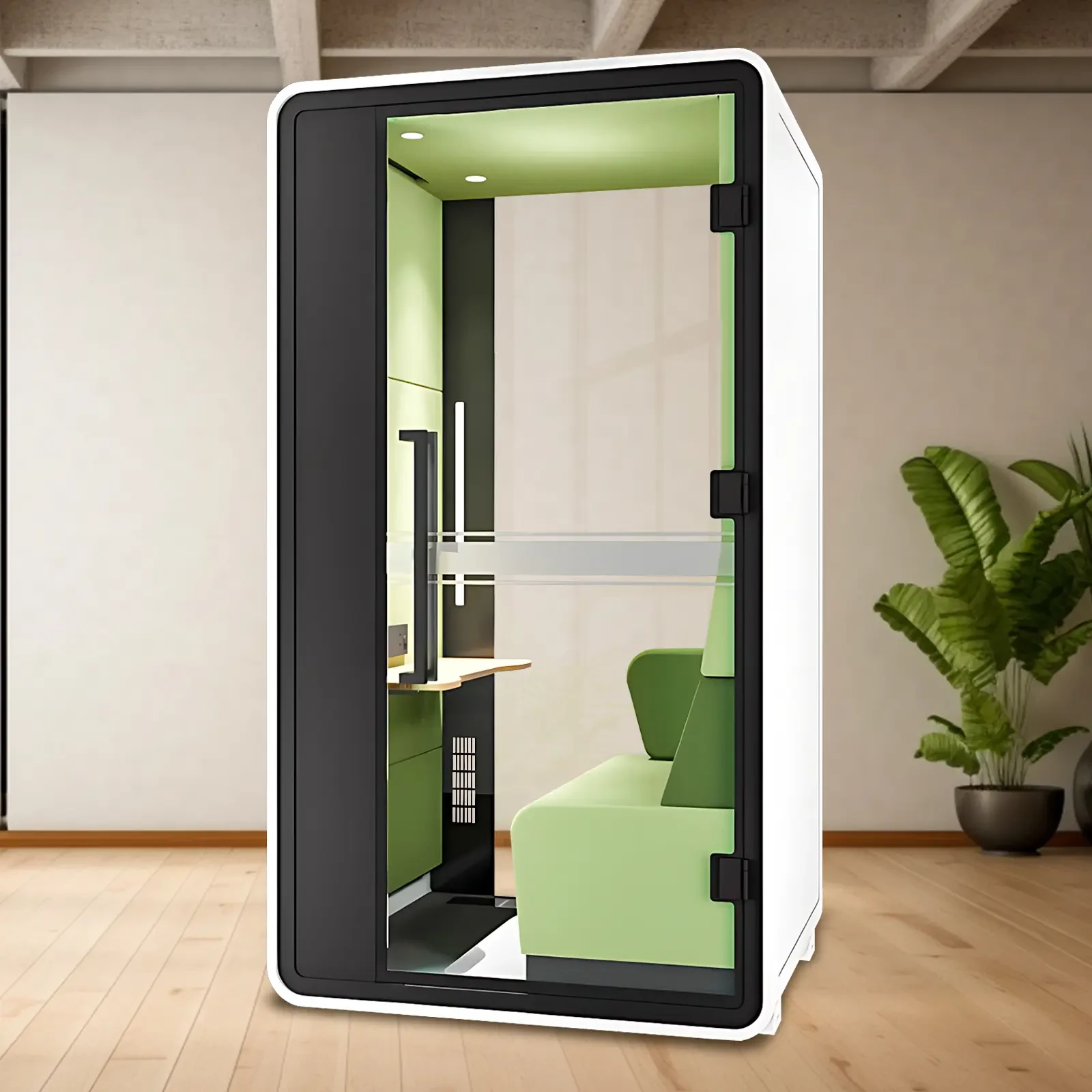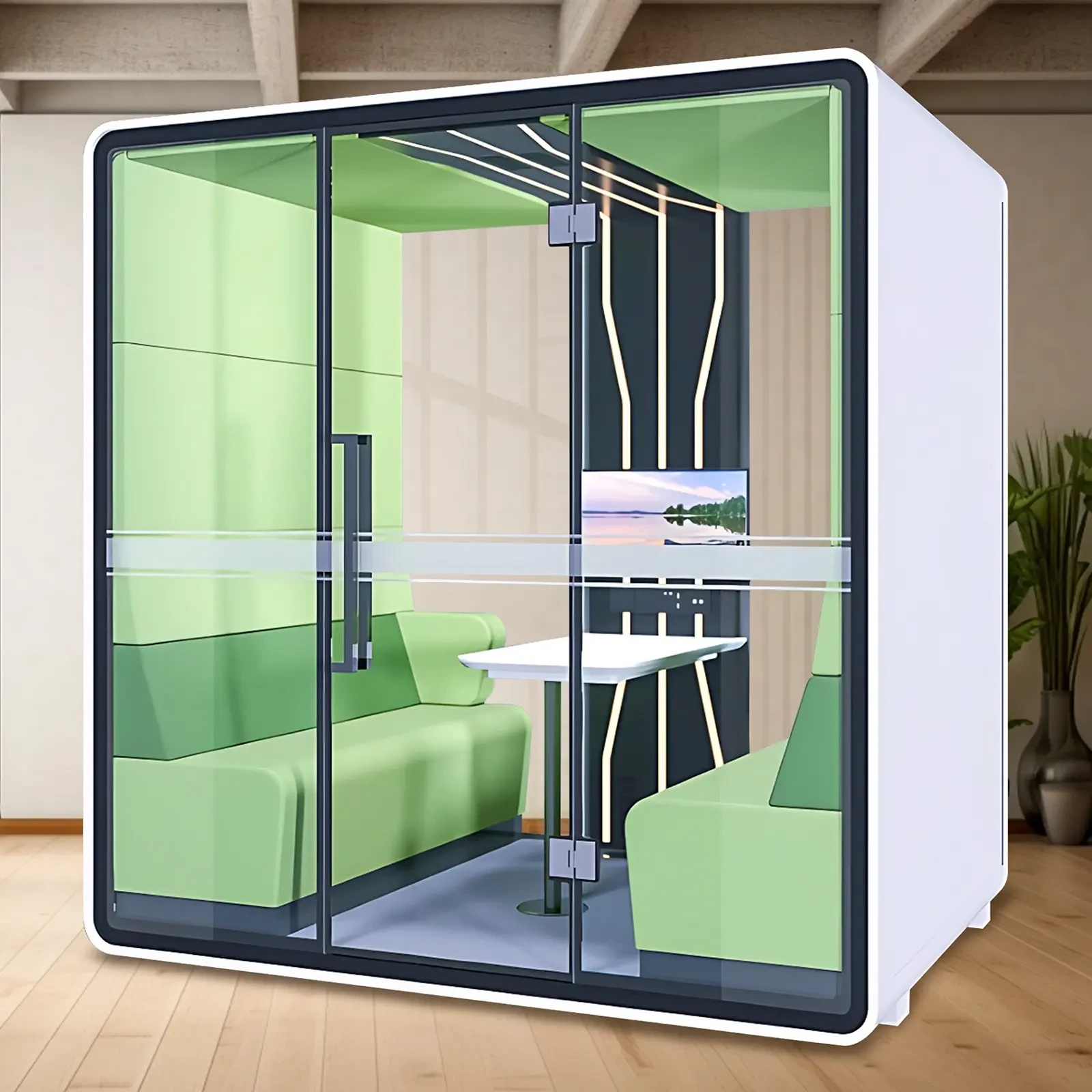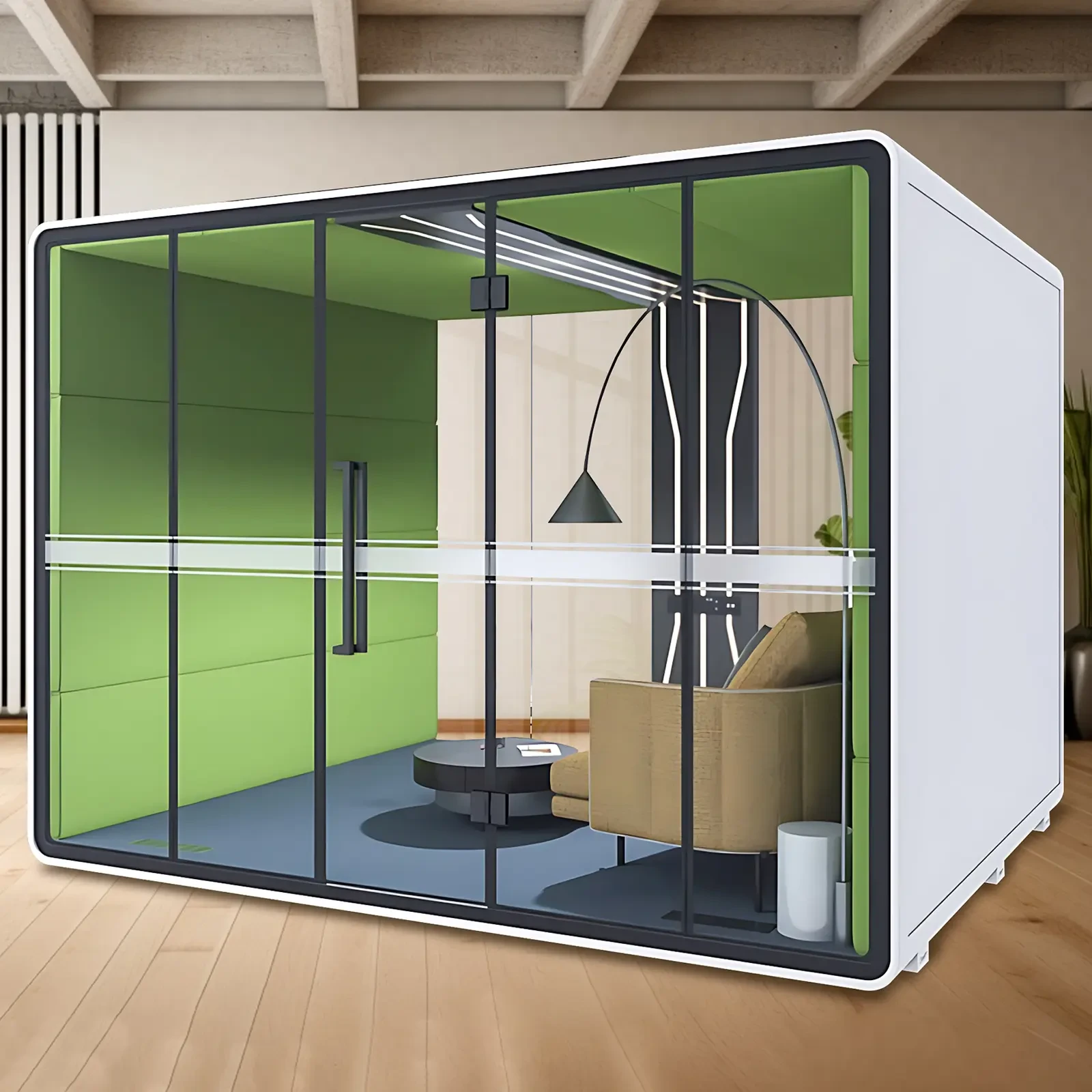In today's world of increasingly severe noise pollution, soundproof rooms, as special spaces that effectively isolate external sounds and create a low-noise environment, are gradually entering more fields, providing a quiet environment for people's work, life, and scientific research.
By definition, a soundproof room is a closed space that effectively blocks airborne and solid-borne sound through sound insulation materials and acoustic design, achieving specific acoustic standards. It is not simply a "soundproof room," but a professional system integrating acoustic engineering, materials science, and structural design. Its core objective is to precisely control the indoor acoustic environment and meet the stringent noise requirements of different scenarios.
The core components of a soundproof room consist of three key parts. First is the sound insulation structure layer, which is the foundation for isolating external noise. The outer layer typically uses thick, solid walls, utilizing the mass law to enhance the blocking of airborne sound; the middle layer is filled with porous sound-absorbing materials such as glass wool and rock wool to absorb sound waves that penetrate the outer layer; the inner layer uses composite walls to further weaken noise propagated by solid vibrations, forming a triple protection of "blocking - absorption - damping." Secondly, the sealing system is crucial. Gaps in doors, windows, and pipe joints are weak points for noise leakage. Soundproof rooms use multiple sealing strips on the doors, along with reinforced door frames. Windows use double or triple-glazed, soundproof glass, and all pipe penetrations through the walls are fitted with soundproof sleeves to ensure overall airtightness. Finally, the ventilation and lighting systems are essential. To prevent ventilation from generating new noise, soundproof rooms are equipped with low-noise fans and silenced ducts, allowing fresh air to circulate silently. Lighting uses LED fixtures with no electromagnetic noise to avoid interference from the equipment itself.
In terms of application scenarios, soundproof rooms have a wide range of uses. In the industrial sector, they serve as "standard laboratories" for product acoustic testing. For example, home appliance manufacturers test the operating noise of refrigerators and washing machines in soundproof rooms to ensure their products meet national noise standards. Automobile manufacturers use soundproof rooms to test engine and chassis vibration noise, providing data support for vehicle noise reduction optimization. In scientific research and the medical field, soundproof rooms safeguard precise experiments. Biological laboratories need a low-noise environment to observe cell growth, while acoustic research institutes utilize soundproof rooms to conduct cutting-edge research on sound wave propagation and noise control. Some hospitals also set up soundproof rooms to provide undisturbed spaces for patients needing rest or those undergoing hearing tests. The demand for soundproof rooms is also increasing in daily life and office settings. University libraries have installed soundproof booths to help students focus on their studies; companies are building quiet offices to allow employees to work efficiently away from noise; and some families are even building small soundproof rooms during renovations for meditation, recording, or for children to attend online classes in peace.
When choosing a soundproof room, several key indicators should be considered based on actual needs. Sound insulation is crucial, as different scenarios have significantly different sound insulation requirements. For example, industrial testing may require sound insulation of 40 decibels or more, while a home soundproof room only needs 25-30 decibels. When purchasing, it is essential to refer to acoustic testing reports issued by professional institutions. The dimensions of a soundproof booth should be determined based on the intended use case. A single-person study booth only requires 1-2 square meters, while a soundproof room for testing large equipment may need tens of square meters. The internal layout must also be considered to ensure it can accommodate the necessary equipment or meet the needs of the activity. Supporting functions are also crucial. If the user needs to stay in the soundproof room for an extended period, products equipped with ventilation, temperature control, and lighting should be selected. For special scenarios such as recording, sound absorption treatment is essential to prevent echoes from affecting the recording quality.
As people increasingly value the quality of the acoustic environment, soundproof room technology is continuously evolving. In the future, soundproof rooms will emphasize lightweight design, shedding the limitations of traditional heavy structures for easier installation and relocation. Intelligent control systems will become increasingly common, allowing users to adjust indoor temperature and ventilation via mobile apps and monitor noise levels in real time. The use of environmentally friendly materials will also become a trend, ensuring sound insulation while reducing environmental pollution and providing a healthier and more comfortable quiet space.
Whether used for precise testing in professional fields or to meet the quiet needs of everyday life, soundproof rooms, with their unique functions, isolate people from the noise of the outside world, safeguarding a rare tranquil space and becoming an indispensable "sound haven" in modern life.

 USD
USD
 GBP
GBP
 EUR
EUR






